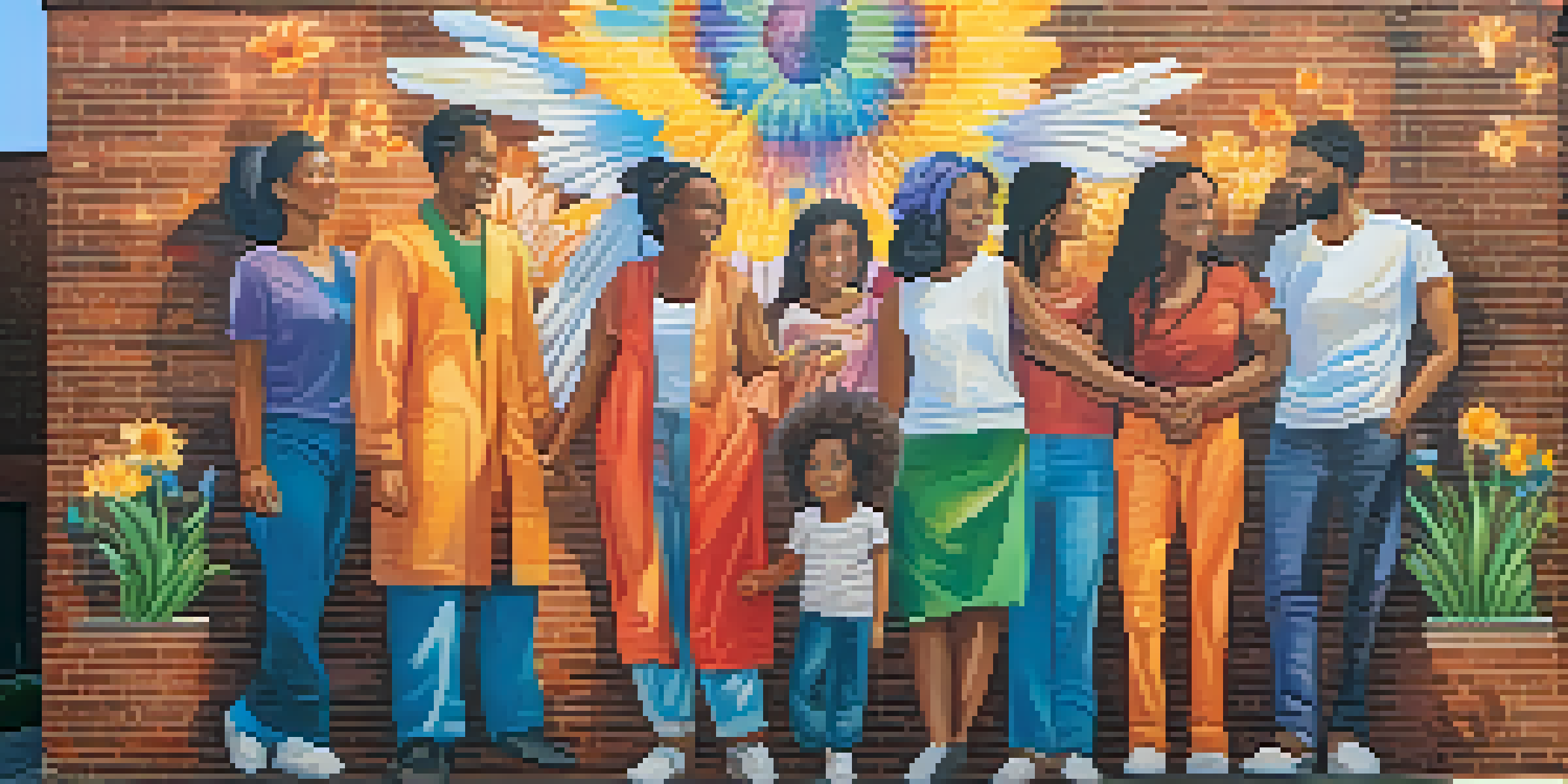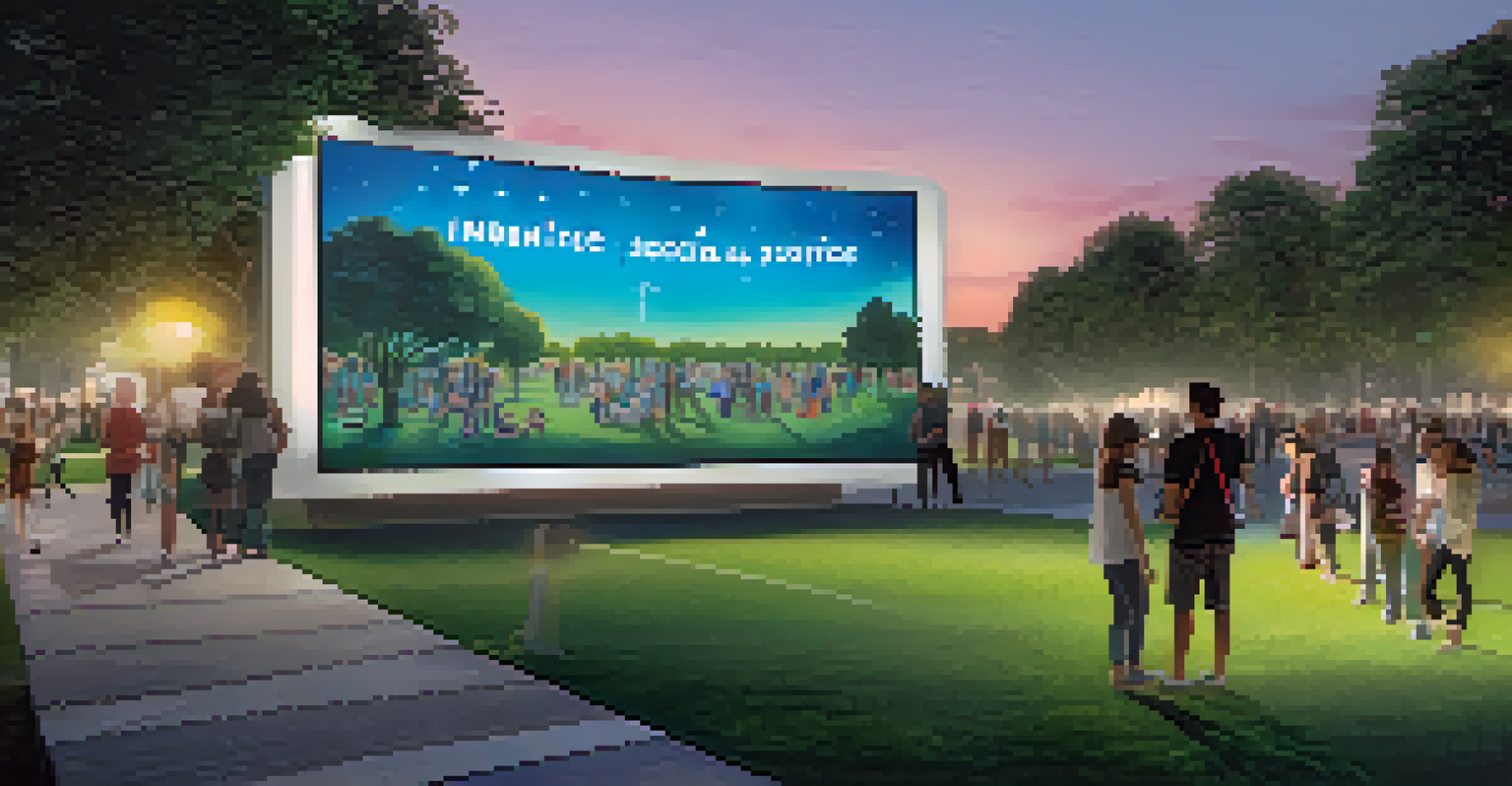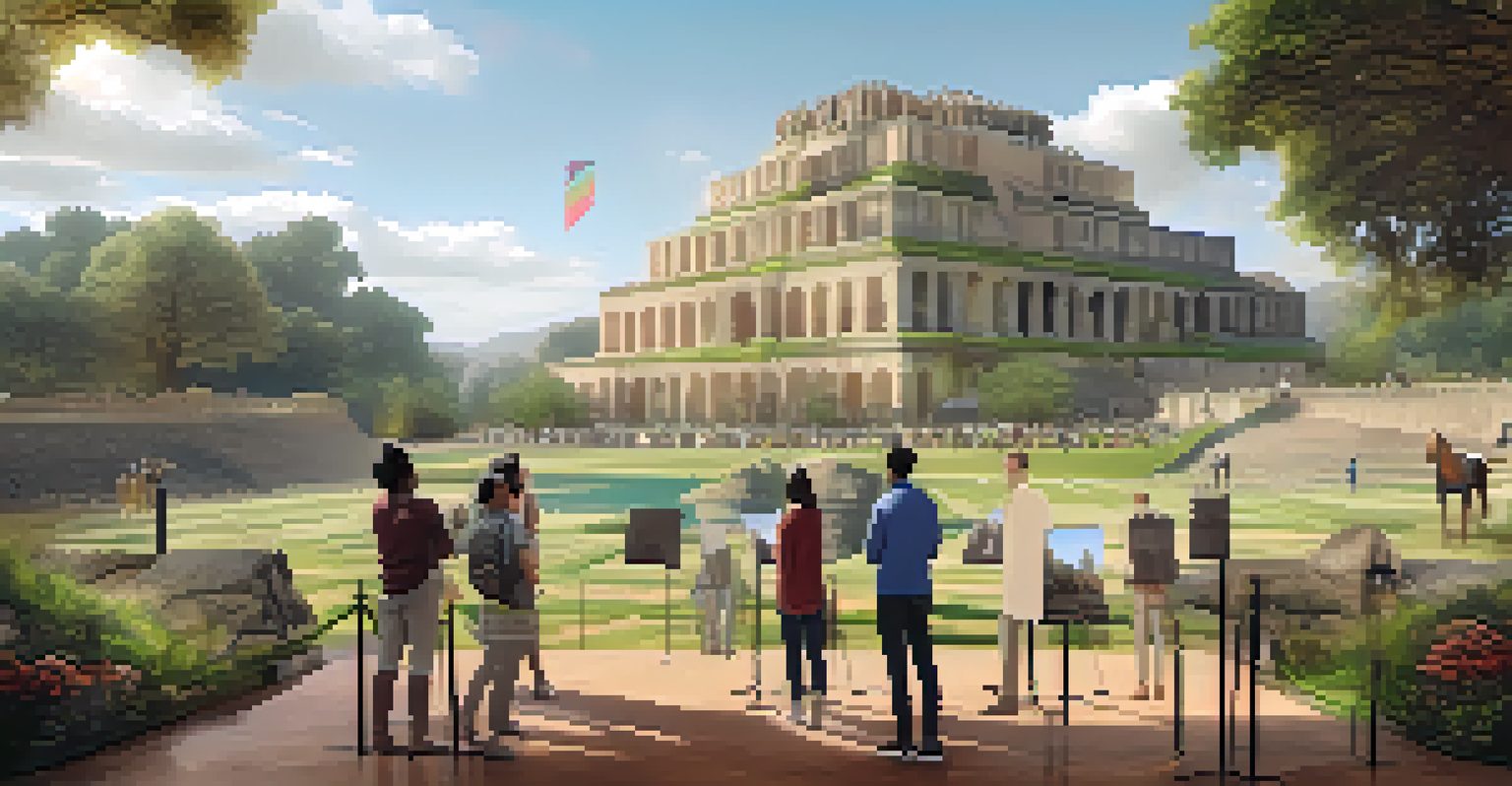Art and Technology: New Mediums for Social Activism

The Intersection of Art and Technology in Activism
Art and technology have long been intertwined, creating a dynamic platform for social activism. In today’s digital age, artists leverage technology to amplify their messages, reaching wider audiences than ever before. This intersection not only enhances the visual appeal of activism but also allows for innovative storytelling that resonates on a personal level. Through various mediums, artists are pushing boundaries, fostering empathy, and igniting conversations around pressing social issues.
Art is not a mirror held up to reality, but a hammer with which to shape it.
For instance, consider the powerful impact of social media art campaigns. Artists can share compelling visuals that highlight injustices, making complex issues more relatable and digestible for the average person. These campaigns often go viral, sparking discussions that transcend geographical boundaries. By harnessing the power of technology, art becomes a universal language that speaks to the heart of social change.
Moreover, technology empowers artists to create interactive experiences that engage audiences in unique ways. Virtual reality installations, for example, allow viewers to immerse themselves in a narrative, experiencing the struggles and triumphs of marginalized communities firsthand. This level of engagement not only raises awareness but also fosters a deeper understanding of the issues at hand, urging individuals to take action.
Digital Art as a Tool for Advocacy
Digital art has emerged as a powerful advocacy tool, offering new avenues for expression and activism. Artists can create digital paintings, illustrations, and animations that address societal issues, all while reaching a global audience through online platforms. This accessibility enables diverse voices to be heard, particularly those that have historically been marginalized or silenced.

Take, for example, the rise of NFT (non-fungible token) art. Artists are now able to sell their work directly to consumers, bypassing traditional gatekeepers like galleries and auction houses. This shift not only democratizes the art world but also allows artists to directly fund their activism. Proceeds from NFT sales can support causes, fund community projects, or raise awareness for critical issues.
Art Amplifies Social Activism
The integration of art and technology provides innovative ways for artists to engage audiences and raise awareness about social issues.
Additionally, digital art's shareability means that a single piece can spark widespread movements. When an artwork resonates, it can be shared and re-shared across social media, amplifying its reach and impact. This viral nature of digital art helps maintain momentum for social movements, keeping important issues at the forefront of public consciousness.
Interactive Installations: Engaging the Public
Interactive art installations are revolutionizing how we engage with social issues. These immersive experiences invite participants to interact with the art, fostering a sense of connection and involvement. By encouraging audiences to physically engage, artists create a space for reflection and dialogue around critical topics.
The role of the artist is to make the revolution irresistible.
For example, consider an installation that allows participants to share their stories on a digital wall. Each contribution weaves a rich tapestry of personal experiences and perspectives, highlighting the collective struggle for social justice. Such installations not only provide a platform for individual voices but also help build community and solidarity among participants.
Moreover, interactive installations can spark spontaneous conversations among attendees, creating a shared experience that transcends traditional art viewing. This engagement encourages participants to think critically about the issues presented and consider their own role in advocating for change. In this way, art becomes a catalyst for action, inspiring individuals to take part in social movements.
The Role of Social Media in Art Activism
Social media plays a pivotal role in the dissemination of art activism, allowing artists to reach audiences far beyond their local communities. Platforms like Instagram and Twitter have become essential tools for sharing visual content, enabling artists to showcase their work and raise awareness about social issues. The immediacy of social media also allows for real-time engagement with followers, fostering a sense of community among activists.
Consider the hashtag movements that have gained traction on social media, such as #BlackLivesMatter or #MeToo. These campaigns have utilized art—whether through graphics, memes, or videos—to convey powerful messages and mobilize supporters. Social media not only amplifies these messages but also encourages individuals to participate in discussions and actions surrounding the issues highlighted.
Digital Platforms Empower Artists
Digital art and social media enable artists to reach global audiences and fund their activism directly, democratizing the art world.
Furthermore, artists can harness social media analytics to understand their audience better and tailor their messages accordingly. By analyzing engagement metrics, they can identify which pieces resonate most, allowing them to refine their approach and maximize impact. This adaptability is crucial in a rapidly changing digital landscape, where being relevant can make all the difference.
Augmented Reality: Merging Realities for Change
Augmented reality (AR) is pushing the boundaries of traditional art forms by merging the digital and physical worlds. This innovative technology allows artists to create layered experiences that provoke thought and inspire action. By using AR, artists can transform public spaces into interactive canvases, effectively turning our environment into a platform for social commentary.
For example, an AR project might overlay digital imagery onto a historical site, providing context about social injustices that have occurred in that location. As viewers interact with their surroundings, they gain a deeper understanding of the issues at play. This blending of realities not only enhances the art experience but also encourages reflection on the societal implications tied to specific spaces.
Moreover, AR can facilitate collaborative art projects that invite community participation. By engaging local residents in the creation process, artists foster a sense of ownership over the artwork and the message it conveys. This collaborative approach strengthens community ties and empowers individuals to advocate for change, making art a collective endeavor in the pursuit of social justice.
Film and Documentaries: Storytelling for Change
Film and documentaries have long been powerful tools for social activism, and with advancements in technology, their impact is only growing. These mediums allow artists to tell compelling stories that shed light on critical social issues, often evoking strong emotional responses from viewers. Through visual storytelling, filmmakers can humanize complex topics, making them more relatable and prompting audiences to take action.
For instance, documentaries that explore themes of inequality, climate change, or human rights can ignite conversations and inspire movements. By showcasing real-life experiences, these films create a sense of urgency and empathy that can drive viewers to engage with the cause. The visual nature of film makes it a powerful medium for advocacy, as it can showcase the stark realities faced by individuals and communities.
Interactive Experiences Foster Engagement
Interactive installations and augmented reality create immersive experiences that encourage public participation and dialogue on critical topics.
Additionally, the rise of streaming platforms has made it easier for these films to reach a global audience. With just a click, viewers can access powerful stories from around the world, sparking interest and awareness on issues they may have previously been unaware of. This accessibility democratizes information, allowing more people to engage with social activism through the lens of art.
The Future of Art and Technology in Activism
As we look to the future, the synergy between art and technology will continue to shape the landscape of social activism. New technological developments, such as artificial intelligence and blockchain, are likely to create even more innovative ways for artists to express their messages and engage audiences. The potential to create unique, personalized experiences for viewers will only enhance the effectiveness of art as a tool for change.
Additionally, as more artists embrace these technologies, we can expect to see a diversification of voices and perspectives in the art world. This inclusivity will enrich the dialogue surrounding social issues and challenge dominant narratives. By amplifying underrepresented voices, art can foster greater understanding and unity among different communities.

Ultimately, the future of art and technology in activism holds immense promise. By continuing to explore and experiment with new mediums, artists can inspire individuals to not only reflect on societal issues but also to take action. The marriage of creativity and technology will undoubtedly play a crucial role in shaping a more just and equitable world.